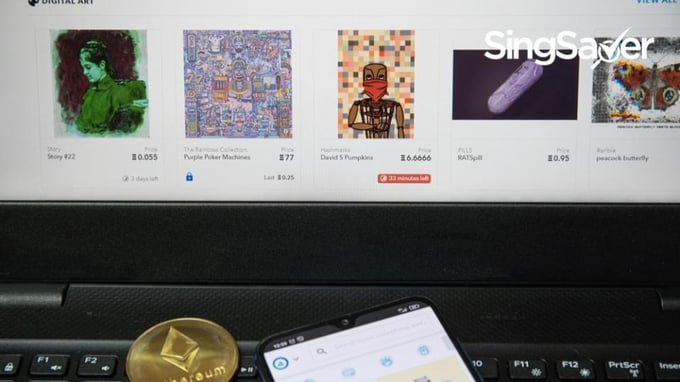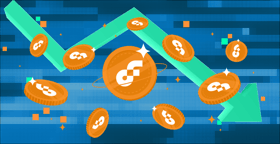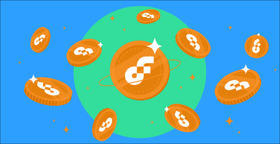The advent of NFTs has added another dimension to the art world, literally and metaphorically. Here’s a full guide to creating, buying, and selling these newfangled digital assets.
There’s a proverb that says beauty is in the eye of the beholder. This applies very much so to artwork, be it paintings, sculptures, or sketches. What people consider to be beautiful changes as the years go by.
You need only look the way of Vincent van Gogh, whose artworks are considered masterpieces now but given little attention when he was still alive.
Something else that has changed in the art industry is how pieces are created, purchased, and sold. This is due to non-fungible tokens (NFTs) arriving at the scene.
These digital certificates of authenticity have swept artists and investors away, with over US$2.3 billion generated in sales during the first half of 2021 alone.
Although analysts are still skeptical, multinational corporations like Coca-Cola, Louis Vuitton, and Nike have embraced NFTs and launched projects of their own.
For digital artists, NFTs represent a way to carve out a passive income stream, especially if they choose to collect royalty fees from their pieces.
If you’re wondering how to get started, check out this step-by-step guide to creating, buying, and selling NFTs.
- What do I need to get started?
- How do I create an NFT?
- How do I sell an NFT?
- How do I purchase NFTs?
- How are people making so much money off NFTs?
- Conclusion
What do I need to get started?
Like most things cryptocurrency, creating, buying, and selling NFTs isn’t the most straightforward process out there. You’ll need several tools before you can make your first transaction, starting with:
1. Deciding on an NFT marketplace
First, you’ll need to determine which NFT marketplace you’d like to use. This sounds odd, but it does have an effect on the other tools that you need.
How large? Try more than US$2.5 million worth of NFTs exchanging hands every hour.
You'll also need to be familiar with marketplaces like OpenSea, SuperRare, Rarible, and Foundation.
2. Getting an appropriate cryptocurrency wallet
The next tool that you need is a cryptocurrency wallet which can hold Ether, the Ethereum blockchain’s native currency. OpenSea currently supports 11 wallets.
And if you’re wondering, yes, Ether is indeed the cryptocurrency used to purchase NFTs. It’s also used to pay the transaction fees (also known as gas) associated with minting, buying, and selling NFTs. But more on that later.
With regards to MetaMask, installation is easy because it’s a simple browser extension for either Google Chrome, Mozilla Firefox, Brave, or Microsoft Edge. It’s also available on iOS or Android if you prefer using your smartphone or tablet.
Furthemore, MetaMask’s user interface is akin to a streamlined online banking app. You can easily transfer Ether that you have in your cryptocurrency exchange account to your MetaMask wallet by scanning a QR code or entering its public key.
Finally, you need to create an OpenSea account. Don’t worry, there are no hoops to jump through for this step. It’s as straightforward as it appears.
3. Buying some cryptocurrency
This is an extra step that you need to take if you don’t have a sufficient amount of Ether on hand. MetaMask lets you purchase Ether using Wyre or Transak, but both of these methods come with additional fees and charges that range from S$10 to S$30.
If you’re a digital artist who’s only looking to create and list NFTs for sale, you’ll need much less Ether on hand as compared to individuals who’re looking to buy NFTs. In OpenSea’s case, creating an NFT is free. Ditto for listing your NFT for sale, unless it’s your first time doing so.
From there, you’ll only need to pay a gas fee whenever you accept a buyer’s offer. This ranges from US$5 to US$20, which won’t eat into your returns if your NFT is priced well.
How do I create an NFT?
Creating, also known as minting, an NFT is straightforward because it’s essentially a digital certificate of authenticity. If you’re on OpenSea, you only need to hit the Create button on the main page before populating the fields that are relevant to your artwork.
You can even add in content that will only be available for the NFT’s owner or list it as an explicit and sensitive piece of content.
Once the NFT is created, it’ll be added to your collection. Before you list it for sale or transfer it to another address, it remains editable in case you left out any important information. You can increase the number of copies that are minted as well.
As mentioned above, creating an NFT on OpenSea is free. However, other platforms might levy a gas fee to create your NFT.
How do I sell an NFT?
Once your NFT is created, you can list it for sale at any time. This step is straightforward too, with several parameters that you need to set before it goes live on the marketplace.
First off, you’ll need to determine whether the NFT will be sold at a fixed price or to the highest bidder in an auction. Thereafter, you can customise how long it’ll be listed on the marketplace.
So far, so good right?
Unfortunately, there are fees and charges associated with putting up your NFT for sale. On OpenSea, listing your NFT for sale costs absolutely nothing from the second time onwards, but you’ll be hit with several fees during your first rodeo.
Firstly, you’ll need to pay a gas fee for initialising your wallet on OpenSea. This ranges from US$150 to US$200 worth of Ether, which is understandably not a small sum. Additionally, you’ll need to pay another one-time fee if you’d like to put your NFT up for auction instead.
Thankfully, this ranges from US$10 to US$30 in Ether, which is much more affordable.
Once you’ve gotten these out of the way, you’ll only need to pay a gas fee whenever you accept a buyer’s offer along with another 2.5% transaction fee that OpenSea charges.
How do I purchase NFTs?
Akin to how you can sell your NFTs at a fixed price or via an auction, there are two ways to purchase them as well. To use the example of OpenSea again, all you need to do is to hit the Buy Now button on an NFT that you like. Once your purchase is successful, the NFT will show up in your account. No fuss, no muss.
Do ensure that you have sufficient Ether in your cryptocurrency wallet for both the NFT itself and gas fees that help to move the transaction along.
The second way to purchase NFTs would be to participate in an auction. If you’re the last bidder standing at the end of the auction, you’ll receive the NFT.
And no, you can’t game the system because OpenSea will automatically add ten minutes to the auction whenever a new highest bid is submitted within the final ten-minute period.
Buying NFTs is definitely a simpler process than creating and selling them, especially if you’re just a digital art collector. Things become a lot more complex only if you’re planning to utilise NFTs as an investment.
How are people making so much money off NFTs?
Like actual paintings and sculptures, NFTs can exchange hands for a pretty penny. An NFT of the Nyan Cat animation listed by its original creator on its 10th anniversary sold for 300 Ether (S$1.47 million).
Canadian musician Grimes on the other hand, managed to sell US$6 million worth of NFTs in late-February 2021.
Therefore, It’s crucial to have a level of star power if you’re an NFT creator.
On the retail investor end, it’s not unheard of for folks to attain profit margins of 100% to 1000% after reselling an NFT from a much-anticipated project hours after its launch. The secret sauce here would be the NFT project’s publicity, and a lot of it.
If you’re an art investor, you’d know this principle like the back of your hand. Artists and their pieces need a level of popularity before they’re able to command a certain price. Remember what happened to Vincent van Gogh while he was still alive?
That’s why NFT projects go to such great lengths to generate buzz. Pre-launch giveaways, websites built from the ground up, a community on Discord, and a roadmap for future artworks are just some of the ways NFT projects generate hype.
And if celebrities or cryptocurrency influencers (yes, these people do exist) publicise a project on their social media pages, prices are almost guaranteed to shoot through the roof.
Retail investors are able to maximise their profit because they’re essentially buying low by minting directly from the project’s website and selling high thereafter.
‘Minting’, in this instance, has a different meaning from creating an NFT from scratch. When you mint an NFT from a project’s website, you’re essentially buying it directly from them at their ‘recommended retail price’.
From there, feel free to list and resell it on OpenSea or any other NFT marketplace of your choice.
Conclusion
Cryptocurrencies are one thing, but NFTs are a whole ‘nother ball game. It’s true that anything and everything can be turned into an NFT, but these digital certificates of authenticity have transformed into a way for digital artists to thrive.
Certain NFT marketplaces even allow you to add royalty fees to your NFT, which isn’t possible with tangible artwork right now.
And as mentioned above, celebrities and businesses are getting in on the action too.
Although the pace of investing in NFTs is much faster than fine art, both have one thing in common: at the end of the day, you’ll still have something aesthetically pleasing to look at while waiting for your profits to reach the target that you have set.
There’s no need to speculate on a project with a tonne of buzz surrounding it if you don’t like the artwork. After all, there are many more in the pipeline that artists are eager to promote.
In providing the above information, SingSaver is not to be construed as in any way engaging or being involved in the distribution or sale of any cryptocurrency or securities token (“crypto assets“).
Neither singsaver.com.sg or the content on it is intended as securities brokerage or investment advice, as an offer or solicitation of an offer to sell or buy, or as an endorsement, recommendation or sponsorship of any company, trading platform or crypto asset; nor do we assume any risk or undertake any liability for the same. The content on singsaver.com.sg is for general information purposes only and does not review or include all available companies, products or offers.
Read these next:
Cryptocurrency Exchange Comparison: Binance Singapore vs Gemini vs Coinhako
5 Ways To Buy And Invest In Bitcoin In Singapore
How Bitcoin Works: Singapore Edition
8 Things In Life That Money Actually Can Buy
Starting A Side Hustle In 2021? These 6 Business Ideas Need Little To $0 Capital
Similar articles
How to Buy Virtual Land in the Metaverse
Buying Digital Movies and Games Makes Zero Financial Sense
A Guide To Investing In Art And The Best Platforms To Start With
The Complete Beginner’s Guide to MetaMask
NFTs vs Fine Art – Which Should You Invest In and What are the Pros and Cons?
Non-Fungible Tokens (NFT): What They Are And How People Are Making Money Off Them
11 Most Popular Top NFTs / NFT Collections You Should Know In 2022
How These Singapore-based Creators Started Their NFT Projects








.jpg?width=280&name=Money%20Confessions%20(Orange).jpg)

